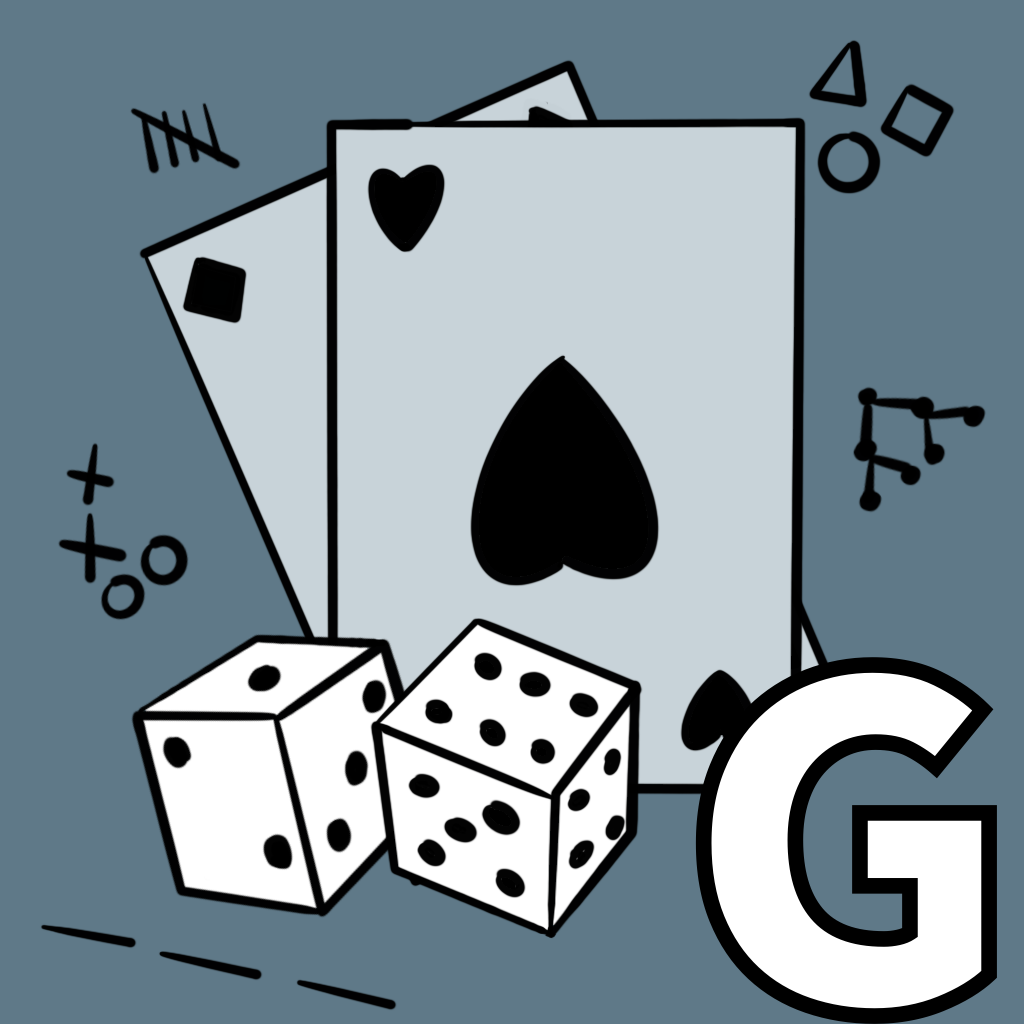ILLUSTRATION
For this project’s illustration, cards and dice work as shorthand for a typical definition of game. You could make a game with either of those objects on their own and of course they find themselves in many games. With only the cards and dice, the image would have been dull. I embellished with symbols related to the aesthetics of game design, pencil-and-paper games, and game theory.
INSPIRATION
When choosing my G word, I considered “goals” and “gusto” but decided on “game” because of the variety of meanings and possibilities. I ended up completing this project about a week late, in part due to a weekend wiped out by vaccine recovery. I thought I was giving myself grace (another G word!) by allowing myself more time. Perhaps I was just gaming the Alpha Projects two-week sprint system.😉
I was excited by the possibilities of exploring game as a concept but I found myself equally overwhelmed. Before my research, I reflected on the various games I recalled playing: board, cards, video, social, drinking, paper and pencil, VR, mobile, tabletop, arcade, facilitation…
I began to learn about game history generally and dove deeper into stories of a few old games: Pac-Mac, Monopoly, and Super Mario Brothers. As time went on, and nearly ran out, I looked into game design jams to identify a process and tools for designing a game quickly. I researched game mechanics. I listened to a couple of game design podcasts while doing the dishes. I even tried out a few game design idea generators, netting such gems as:
- A god game where you invent dogs until you're bored.
- A puzzle game set in a house. Where the goal is reach a destination and you can't touch the floor. The game also has something to do with fruit.
- A simulation game where you drag and drop horses to score karma.
- An MMO where you challenge spider people because thou must.
- A strategy game set in a cave. Where the goal is capture something and you can only select connecting items. The game also has something to do with fruit.
CREATION
During my last Creative Quest session on color, I happened to mention my project to a game designer. He suggested I check out bitsy and I did. Bitsy describes itself as a “little editor for little games or worlds” and I discovered that meant it lends itself well to interactive storytelling.
I looked at bitsy games on itch.io, a “simple way to find and share indie games online.” I even found a game comic on friendship, a tribute to my last theme for Alpha Projects. I just didn’t feel like I had interactive fiction in me right now.
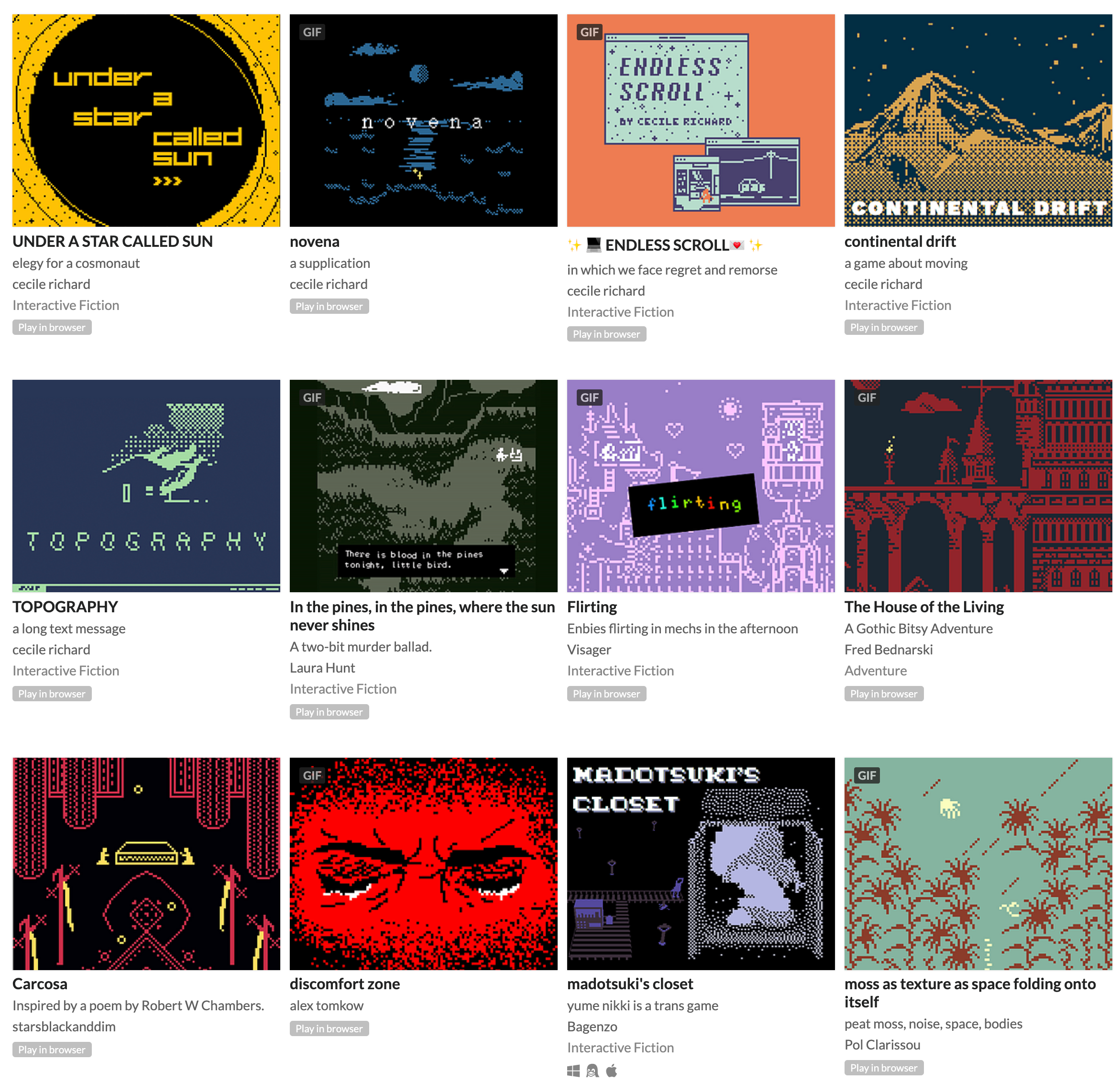
I could have done a printed card game. It seems like everyone has made one. I wanted to push myself for this project.
Eventually, I had a few ideas:
- Not a game, a game to identify what are games: meta and maybe ironic?
- A Jamboard/MURAL version of Telestrations: making a game in a virtual whiteboard was too close to what I do when I facilitate as a designer
- Adding a game layer to everyday life: for example, using dice for instructions on how react to a situation
- Colorgories: the impact of Creative Quest continues with this color categories competition!
After doing a number of digital projects, analog was the way to go. I raided my existing game storage and alongside some gorgeous MoMa purchases was a friend-inspired impulse buy from Flying Tiger, a Danish variety store that is sadly no longer in New York or the US.
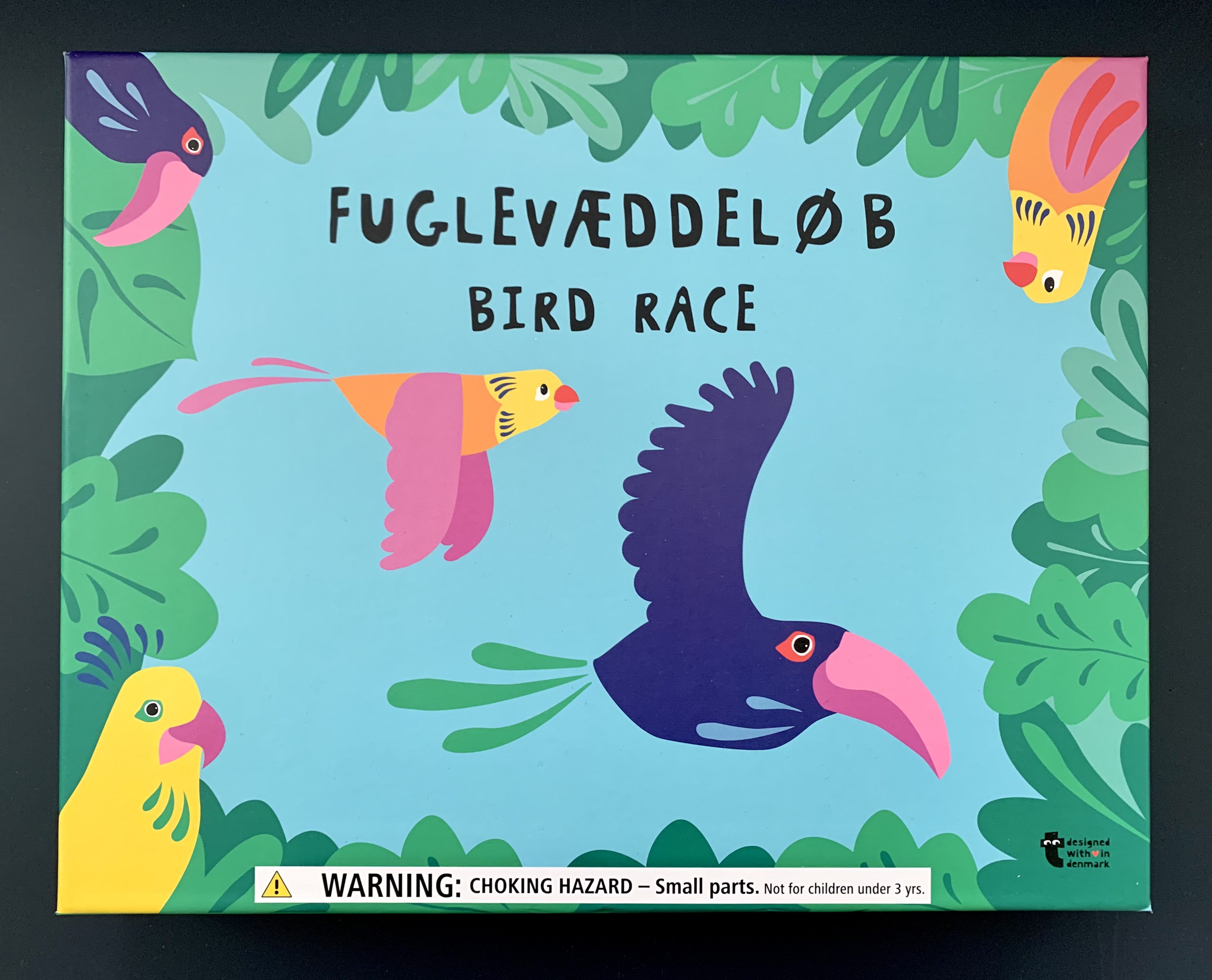
The game Fugle Væddeløb or “bird race” is made for players 3+ years old which means the racing game mechanics are basic; you roll the dice and the two colors shown indicate which birds move one space. If the same color appears twice on the dice, that player moves two spaces. The first bird to finish wins! The game is so simple, I wouldn’t actually play unless I was around a 3-year-old. It was perfect to build a more complex game around.
Building on the bird game had a nice benefit of making it look more polished while also saving me time to design and print or paint the board game artwork. The board came with colorful wooden dice and bird-shaped game pieces. The downside to creating a new game with the bones of an existing game is the challenge working around game mechanics based on the original design (e.g. the race).
I started to map out the game’s objective and additional mechanics. With friendship still on the brain after the last Alpha Projects sprint, I decided the game’s goal would be to build closer connections while having fun. Of course, there’s still the goal from the original game board where the first bird that makes it to the end, wins. I came up with three challenge categories:
- Connect: conversation starters to learn more about each other
- Eliminate: mini rounds of One Gotta Go where those who are the successful persuaders advance an extra space
- Draw: personalized creative prompts for communicating visually, where players draw on mini paper pads or whiteboards
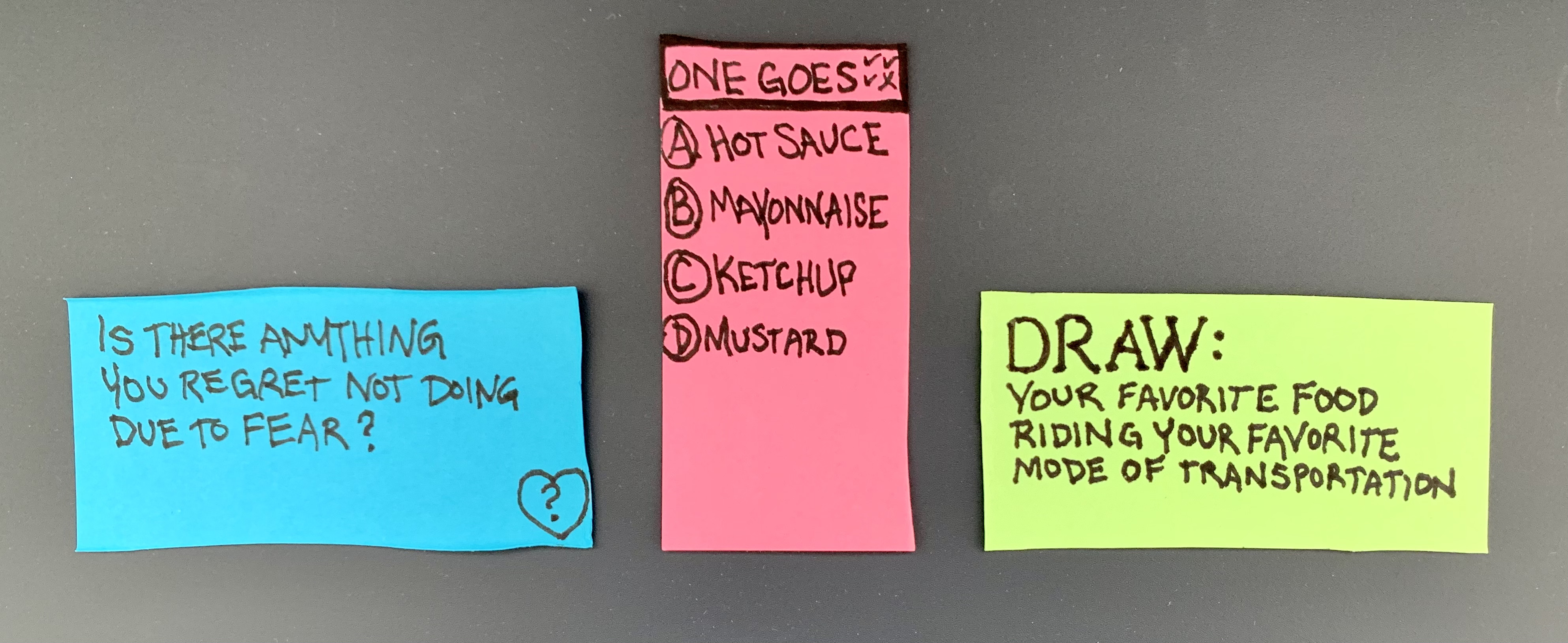
For the design, I lucked out and was able to find three colored plastic Easter eggs (discounted to 30 cents, post-holiday)! These would hold the prompts for each challenge category. The store shelves were largely bare but I managed to find a set of colorful star stickers to layer the challenge categories onto the board. I arranged two orange stars as starbursts to indicate moving ahead one space if landed upon.
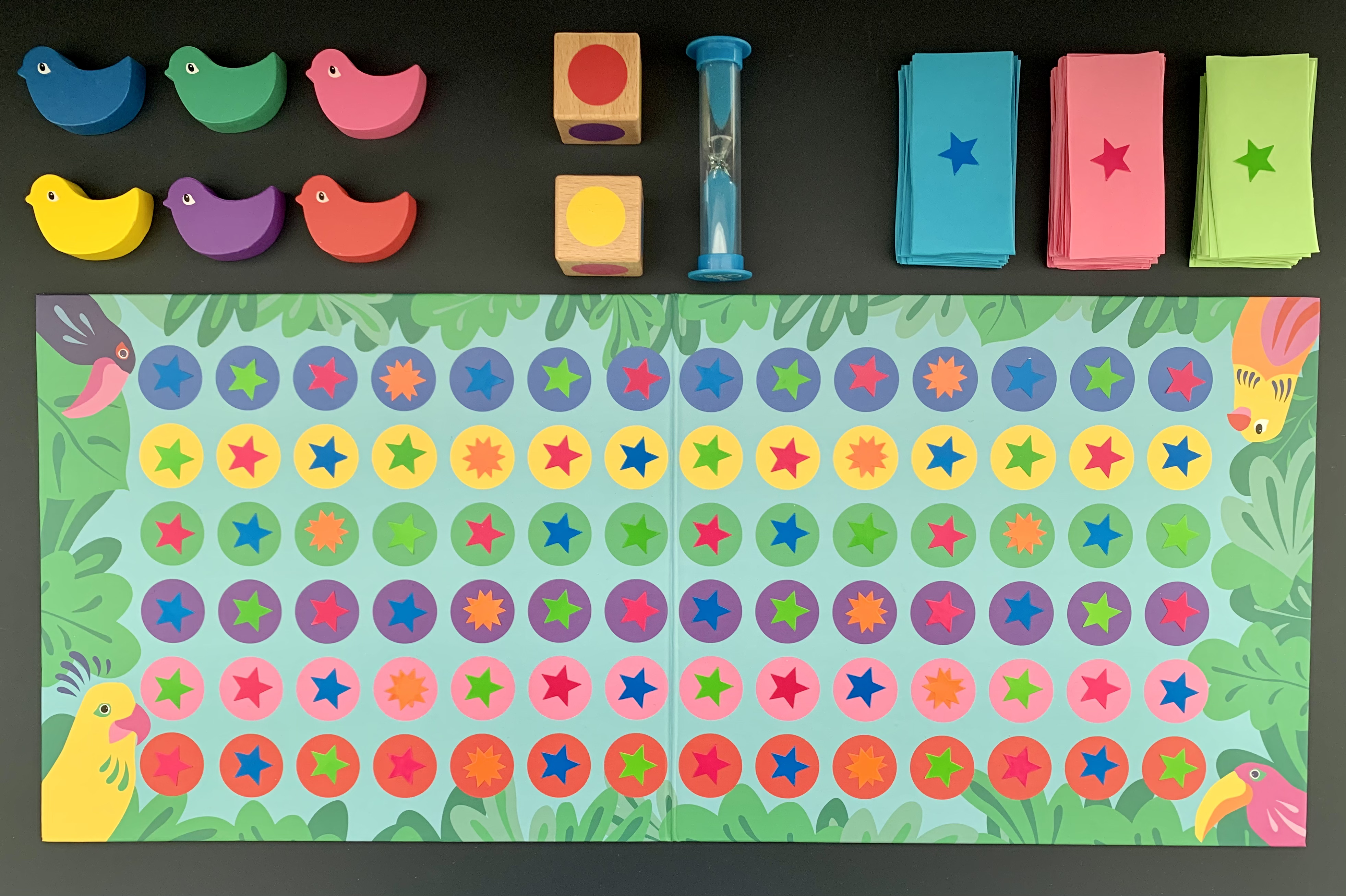
Note if I was really producing this, I wouldn’t use stars for all of the icons because I’d want there to be another way outside of color to differentiate them for accessibility. Similarly, I would add patterns or another way to differentiate the birds. I’d also have a slightly larger card size to accommodate larger type. For a prototype, this is looking good!
When I made the cards, the size needed to support each play category. I also tested them folded in half or rolled up to see how to best accommodate at least 24 selections in the egg container. Bonus: the size of the containers are perfect to fit in your hand and make a satisfying sound when you share them.
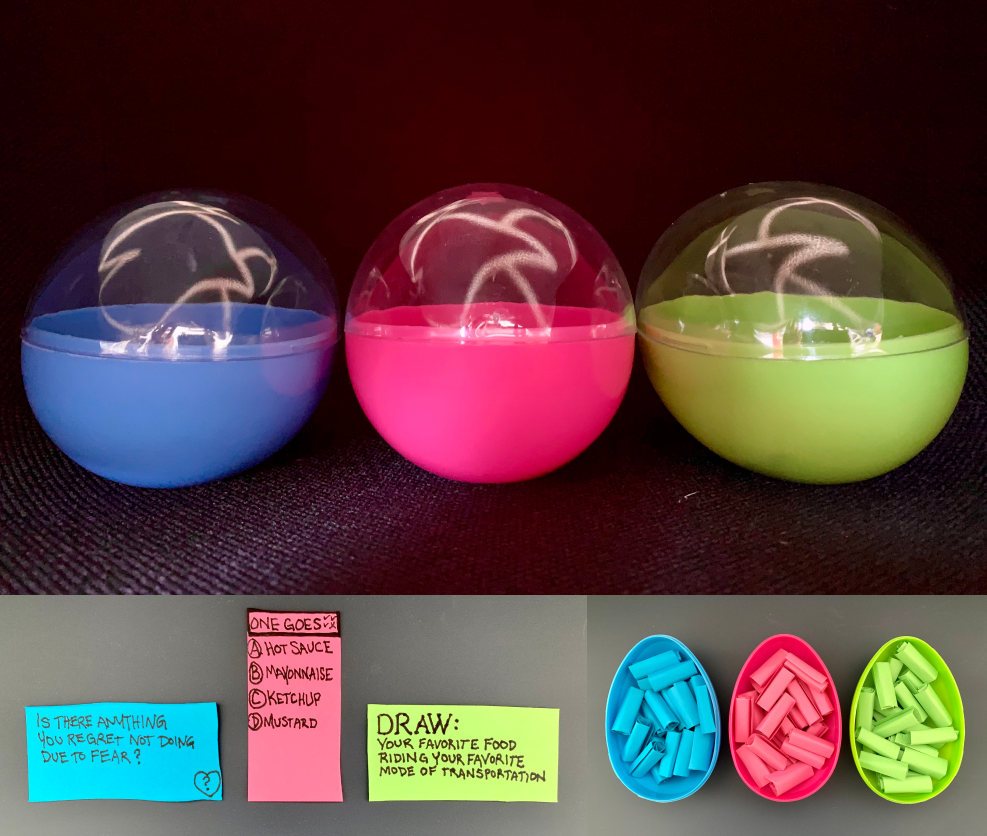
I thought about giving the birds back stories, where they might represent different personalities. That was a nice-to-have I ended up not having time to explore.
I designed the rules to rest against the original Bird Race box's artwork. I call the game "Flock" and am pleased with the typefaces I used.
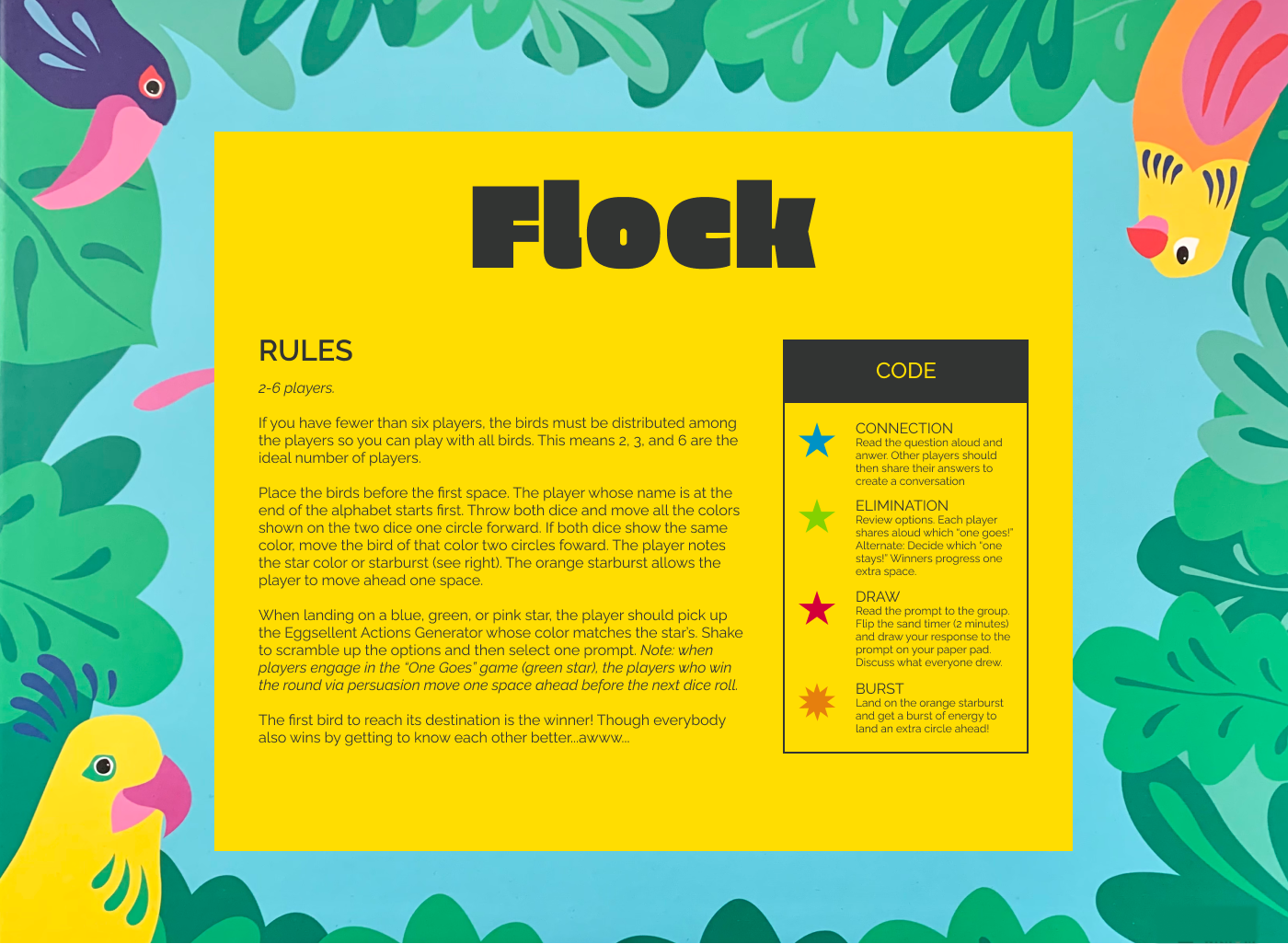
REFLECTION
A reflection on the game design: the fun of having three mini-games, via the star challenges, is that you can see how these could also be played without the board. You could even continue to use a die to further randomize the playing.
A personal reflection: this project was challenging, and not just due to the vaccine-related time constraints. I was trying to express myself through other systems (in this case, the systems of game design) when I sometimes design better outside of systems. It’s like I’m trying to express myself in Arabic when I don’t know Arabic. Instead of feeling like I needed to fully understand game mechanics, I could have tapped into my own understanding based on games I’ve l played. I remove myself from the process when I go too deep into what I don't know and ignore what I do know. This is my project and my self is the differentiator. Time can often remind me of this because when time is limited, I have to do the work and stop overthinking.
CONNECTION(S)
For curated links and other content I couldn't fit into this post, subscribe to the email newsletter.
